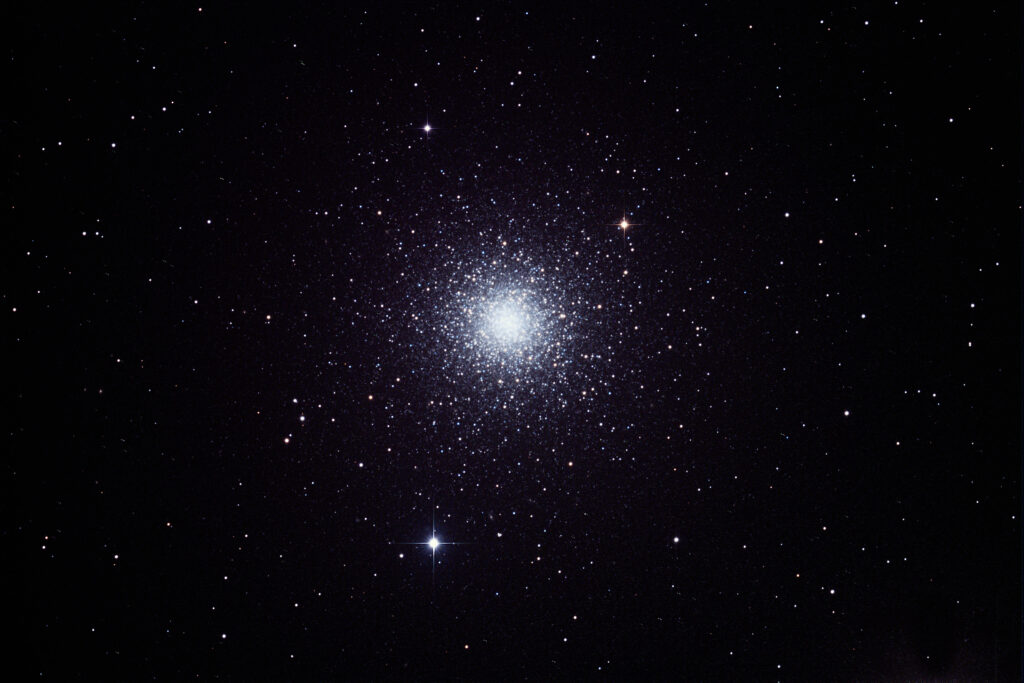A spectacular globular star cluster in Canes Venatici containing a half a million stars. About 150 globular clusters have been observed in our Milky Way galaxy. Most of them far from the core in the "halo" that surrounds the galaxy.
In recent years, astronomers have discovered that the "orbital velocity" of globular clusters as they orbit the center of our galaxy is nearly identical to the orbital velocity of our Sun, even though they are much farther from the galactic center. Normally (according to Kepler's third law of planetary motion) stars farther from a galaxy's center should have a slower orbital velocity (like planets). The only possible explanation for the unexpectedly high velocity of globular clusters is the existence of considerable mass within their orbits around the galactic center. The mass within a radius "R" of the center of a spiral galaxy is determined by Isaac Newton's modification of Kepler's third law of planetary motion: M = v^2*R/G (where v = orbital velocity, and G = Newton's gravitational constant).
The amount of mass required to account for the high orbital velocity of remote globular clusters is about five times what we actually see! The rest is what astronomers call "dark matter." Finding this dark matter is one of the greatest and most elusive challenges of modern astronomy.
Charles Messier discovered this object in 1764 using a 12" telescope. His description, which reveals much about the quality of his instrument, was: "It doesn't contain any stars."
Globular Cluster M3
Date Taken:February 28, 2014
Location Taken:New Mexico Skies Observatory
Conditions of Location: Equipment Used:Planewave 17" CDT telescope, FLI PL6303E camera
Processing Used:10x3 minutes luminance, 6x3 minutes red, green, blue, for a total exposure of 1 hour 24 minutes.
Distance from Location:40,000 light years
Constellation:Canes Venatici
Other Link:
